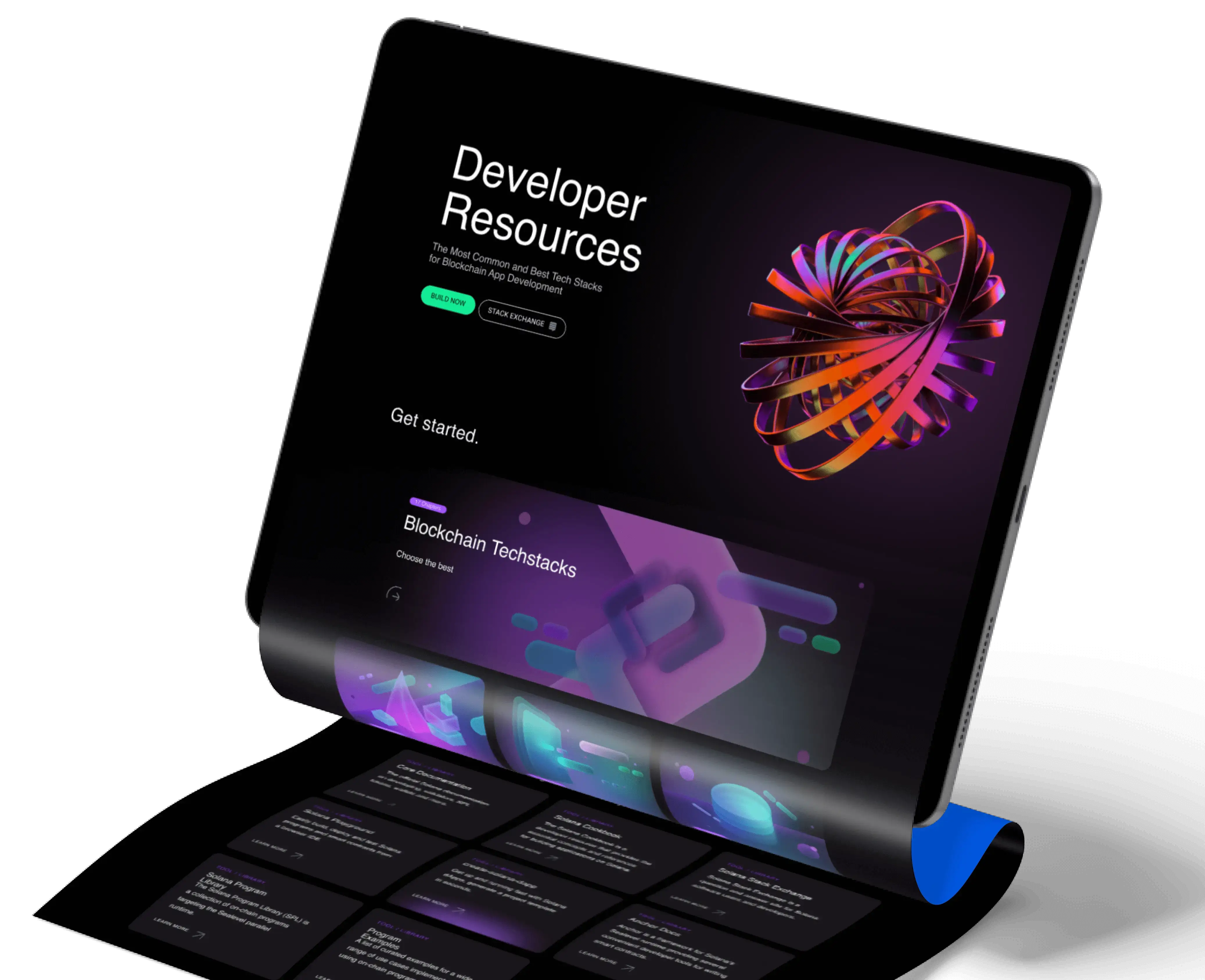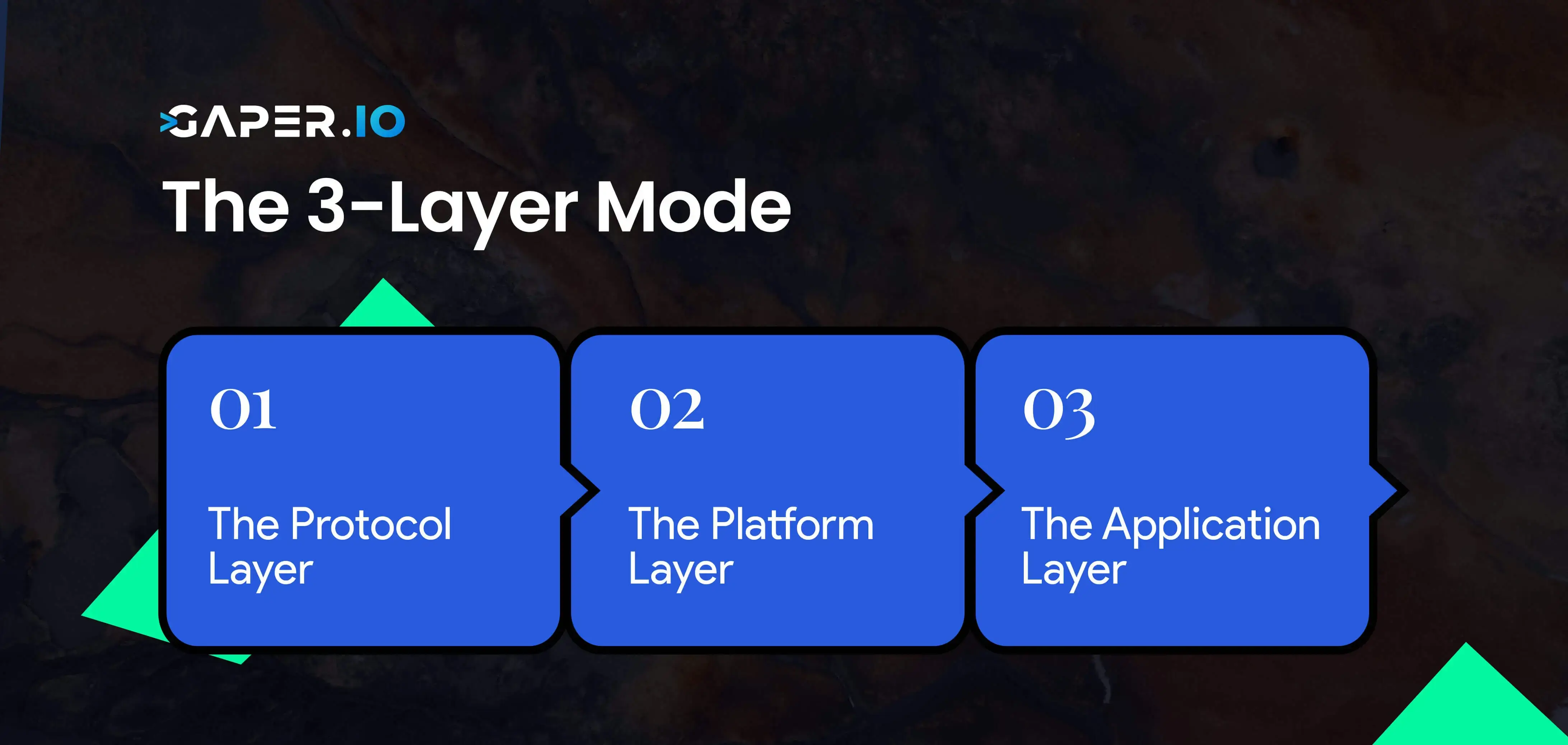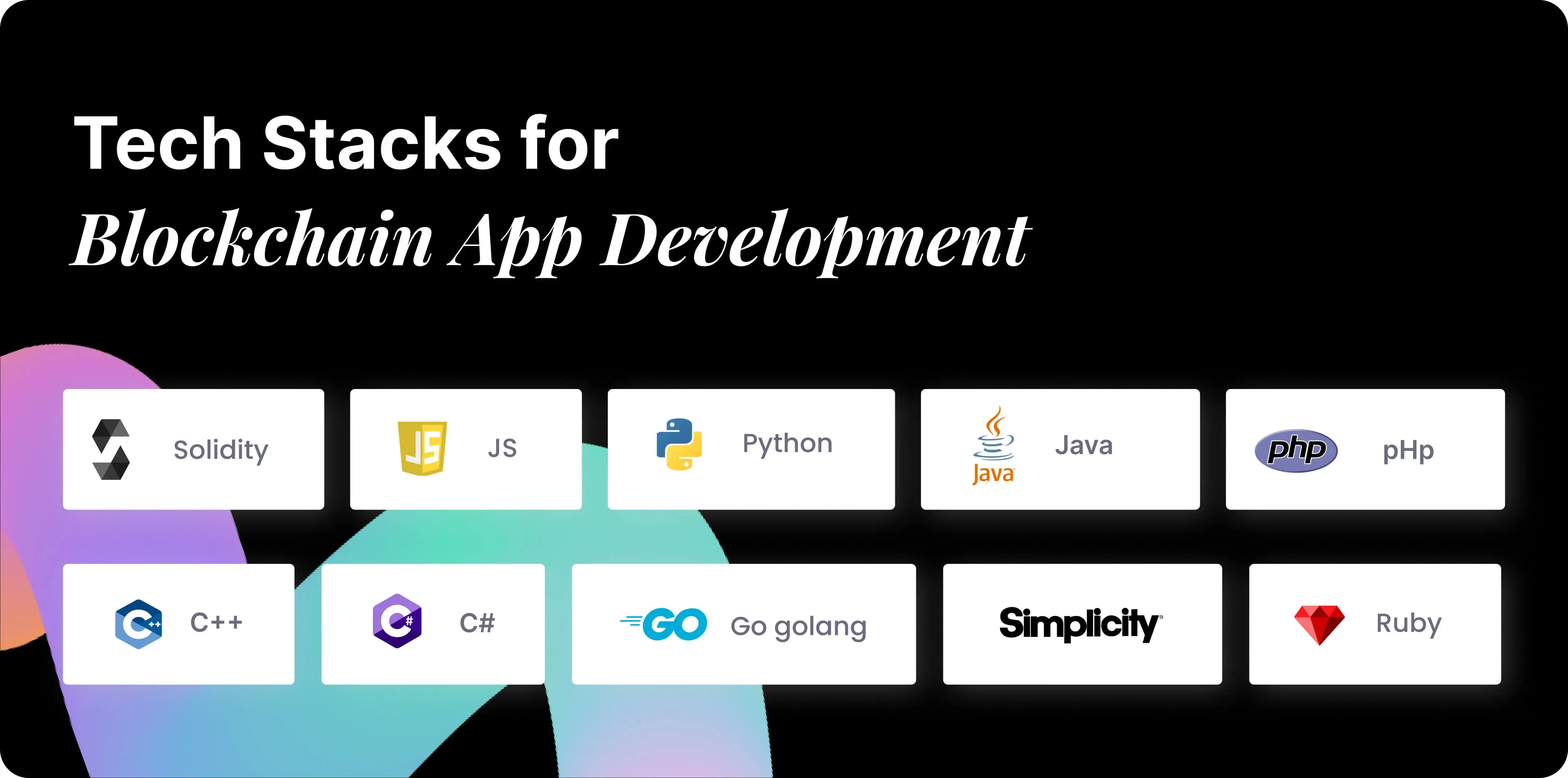
In today’s highly competitive industry, having a unique product idea is merely the first step toward success. Creating a successful mobile app requires catering to a wide range of user preferences and choosing the right mobile application technology stack.
If you don’t know what blockchain is, you have most probably been living under a rock. Through the years, this technology has assisted in reducing the conventional difficulties that a variety of businesses encounter, allowing them to seize more favorable prospects.
If you don’t know what blockchain is, you have most probably been living under a rock.
Through the years, this technology has assisted in reducing the conventional difficulties that a variety of businesses encounter, allowing them to seize more favorable prospects.
Blockchain evidently holds the potential to completely transform our entire economy – including legal, medical, transport, and educational sectors. For this reason, Blockchain businesses have been a popular endeavor for entrepreneurs in the past few years.
Blockchain came into most demand between the years 2017-2020 where the demand for the tech increased by almost 2000%.
Many businesses are seeking to hire blockchain engineers since the technology is establishing itself in previously untapped industries.
With the high demand for blockchain app developers, it is also becoming hard to stay on top of the leading tech. To stay at the top of the game, tech aficionados must be knowledgeable about the best languages for blockchain development to be competitive.
Hence, we bring you this article to help you stay in the game and reach the top.
Have a look at the most common and best tech stacks that can be used for blockchain app development and along the way, let’s learn more about blockchain!
The phrase “technology stack” is frequently used while discussing software development. The set of computer programs and development aids that go into creating a software application is referred to as a technological stack.
The fundamental platforms and protocols that are utilized to create blockchain applications are referred to as a technological stack in the blockchain industry.
The technological stack for web 3.0 differs significantly from that of web 1.0 or web 2.0.
Let’s examine a few of the most noteworthy changes:
Tim Berners-Lee, the creator of the World Wide Web, initially introduced the idea of the “semantic web,” which is sometimes referred to as Web 3.0. The fundamental concept is to mark up web pages with metadata tags that describe the contents of the page. This would improve how well computers comprehend the context of web pages and simplify things to locate key data.
In actuality, things appear different:
Semantic Web technologies are not yet extensively deployed, and “Web 3.0” is frequently used to allude to broader concepts about the web’s future.
The usage of artificial intelligence may be one way that Web 3.0 differs from earlier web generations.
Data may be processed and understood by AI in ways that are not possible for humans. AI may, for instance, analyze a user’s browsing history to provide customized suggestions or automatically create summaries of online sites. In the end, AI could contribute to a more practical and accessible online.
Examples of how major corporations are utilizing blockchain networks and AI include:
 Amazon
Amazonis enhancing its customer support using AI. The business has created a chatbot that can respond to inquiries from consumers.
 Facebook
Facebookis enhancing its news stream with AI. The dominant social media platform employs machine learning to recognize and rank the news articles that users will care about most.
 IBM
IBMis developing a worldwide food traceability system utilizing blockchain. To track out the sources of food goods, the business is collaborating with Walmart and Nestle.
 Microsoft
Microsoftis enhancing its search engine with AI. The business has created a new algorithm to better comprehend searchers’ intentions.
The initial iteration of the World Wide Web, known as Web 1.0, had static, text-heavy webpages.
Toward the beginning of the 2000s, Web 2.0 appeared, ushering in a new era of interaction and teamwork. User-generated content (UGC) and social media platforms such as Facebook and Twitter become standard.
We’re now in the early stages of web 3.0, also known as the “decentralized web.”
The current cloud solutions will get better. The network and protocol suite will also.
It is possible that this new online age may educate people and offer them more control over their online selves.
Our lives now revolve around the world wide web. Users utilize it for a variety of things, including handling their finances, working, and staying in contact with family and friends.
This widespread use is what distinguishes web 3.0 from its forerunner. Web 3.0 is a platform for interpersonal interaction, commerce, and much more, while Web 1.0 was simply a data consumption device.
This term alludes to the developing pattern of networked, talkative electronics.
As an illustration, your home may feature a smart thermostat that can change the temperature depending on your routine. Another option is to use a fitness tracker, which may track your activities and provide feedback on how you’re doing.
We can anticipate the Internet of Things (IoT) having a huge influence on our lives as more and more gadgets connect since the possibilities are unlimited.
Decentralization is connected to ubiquity as well. Your private information can be kept secure in an intelligent fridge rather than being kept on a computer that any large corporation can access.
Web 3.0 is expected to advance things by emphasizing virtual reality and 3D visuals. Users may actively involve themselves in a realistic online environment using web 3.0.
You will engage in social interaction in a way that has never been imaginable before.
Web 3.0 will, in short, transform the internet as we know it and usher in a brand new world of technological wonders. A few instances are the increased usage of 3D printing, virtual reality, and augmented reality.
Keep in mind that virtualization has the power to revolutionize conventional computing, beginning at the hardware and architectural levels.
The next phase of internet development is called Web 3.0.
Decentralization, ubiquity, and the emergence of cutting-edge technology like blockchain and AI are their defining characteristics. We will move away from centralized networks and toward networked apps that utilize decentralized technology with the advent of web 3.0.
It is possible that this new web generation may liberate people and offer them more authority over their virtual selves. Web 3.0 is still in its early stages, but it is expected to have a significant influence on how we use the internet.
The emergence of Web 3.0 offers investors a number of chances.
Among the most cutting-edge and fascinating technologies, today is blockchain. Three of the core technologies underlying the blockchain are listed below:
These three technologies are the main but yet still only a few that make up the blockchain.
Together, they build a solid and safe framework that transforms how businesses operate.
The protocol layer, platform layer, and application layer are three of the layers that make up the blockchain technology stack, according to certain sources.
Other models (such as the OSI model) examine seven standardized communication levels among several computers. Yet, the blockchain combines several of these levels. Other times, a different technological layer may show up.
The layers mentioned below are likely to be impacted by digital assets, user interfaces, data streams, and perhaps even your internet service. Thus, we’ll continue to use the 3-layer mode:

The base layer of the blockchain technology stack is the developed protocol suite. Consensus, communication, and security are all under its control. The protocol layer is the foundation of the blockchain, which is what makes this innovation so special. A database is what the blockchain would look like if it didn’t have a protocol layer.
That’s because the protocol layer:
The blockchain software itself operates on the platform layer. This layer makes sure that information is irreversible and that payment transactions are safely documented. Additionally, it offers the framework for creating applications.
The three most well-known platforms in this area are Hyperledger Fabric, Corda, and Ethereum.
Although each platform has its own special capabilities, they all aim to provide a safe and effective means to capture and retain data.
In the blockchain technology stack, all the activity takes place at the application layer. Here, payments are handled and smart contracts are carried out.
Let it be through a wallet, a decentralized application, or another kind of program, users interface with blockchain there as well. For users to interface with the blockchain and conduct transactions on the network, the application layer is required. Without it, using the blockchain would not be possible.
Since it is extremely simple to construct apps on top of platforms that already exist such as Ethereum, the application layer is also where the majority of advancement takes place. Consequently, the application layer of blockchain technology is starting to see a number of inventive uses.

Solidity is the first blockchain programming language that is a must to learn. It draws inspiration from JavaScript, Powershell, and C++. especially if you’re trying to get into the ICO development game or want to develop dApps.
Ethereum creator Vitalik Buterin also designed the Solidity blockchain programming language.
It provides blockchain development firms with a myriad of benefits, such as:
Java, the official language of Android mobile app development and a preferred option for backend development, is also considered one of the top blockchain programming languages used for Blockchain development.
The language is derived from C-syntax and is widely chosen for building sophisticated smart contracts and dApps because of its following properties:
In addition to dominating the fields of network servers, IoT apps, and apps for mobile devices, Python has also shown to be a valuable tool for blockchain programming.
The language, created in 1991, is widely used for dApps and Smart Contracts development because of the exceptional features it offers. Some of those features of blockchain coding in Python include:
Steem, Hyperledger Fabric, and NEO are a few popular Python–based Blockchain projects that are prevailing in the industry.
Considered for a wide range of app and game development needs, JavaScript is also one of the best Blockchain programming languages to keep an eye on.
The language, in the form of frameworks like Node.js framework, offers innumerable benefits to developers, such as:
Every reputable mobile app development business recommends using PHP (Hypertext Preprocessor), a programming language that was first introduced in 1995, to create Blockchain solutions.
PHP is frequently used to create blockchain solutions of various levels of sophistication. Its extensive open-source ecosystem and object-oriented characteristics have a cascading effect on something.
The finest programming language for creating cryptocurrencies is C++, which Bjarne Stroustrup first presented in 1985.
The OOPs methodology-based language is widely used to create digital currencies like Bitcoin, Litecoin, Ripple, Stellar, and EOS. Some of the prominent features and functionalities oF C++ are:
The OOP language, developed by Microsoft to replace Java for Blockchain writing, has a host of features for cross-platform, cloud, and enterprise-powered programmes. The language is highly appreciated for Blockchain development and is loaded with capabilities from the C, SQL, and.NET frameworks.
The programming language is majorly considered for building dApps, Smart Contracts, and infrastructure in a Blockchain environment.
The Go programming language has also achieved tremendous popularity and is included in the top Blockchain coding languages list.
The language has the greatest qualities of JavaScript and Python, including user-friendliness, scalability, flexibility, and speed, in addition to being simple to understand. It has a feature that makes it an excellent choice for delivering customized Blockchain solutions.
Go-Ethereum and Hyperledger Fabric are two of the top Go-based Blockchain systems currently available on the market.
One of the top Blockchain coding languages, Simplicity, was developed by Russell O’Connor and released to the public in November 2017.
The Simplicity programming language is built on Ivy and uses a syntax that is similar to Haskell, making development faster and more efficient. In addition, it has a strong mathematical component and makes the codeline legible by humans. Because of this, it is often utilized to create blockchain solutions and Smart Contracts that function with both the Bitcoin Virtual Machine and the Ethereum Virtual Machine (EVM).
The ideal language to launch your blockchain development career with is Ruby.
This high-level, general-purpose programming language, created by Yukihiro “Matz” in the middle of the 1990s, enables blockchain developers to quickly and easily prototype their ideas using open-source third-party APIs and plugins. The language also allows programmers the chance to combine its capabilities with those of other languages to create a platform that is more advanced.
Asian developers give it serious consideration while creating platforms and apps that use blockchain technology.
When figuring out what skills are required to become a blockchain developer, make sure you keep up to date with what is on-demand in the market. Such fast-paced niches change quickly and you, as an aspiring developer or a tech recruiter would need to know exactly what is needed to set up apart from your competitors.
Sign up with Gaper to hire a Blockchain developer for your business now.
1. You upload your resume and basic information
2. This is followed by a skills based assessment
3. Once you clear the assessment you are interviewed before making into the final pool
Top quality ensured or we work for free
